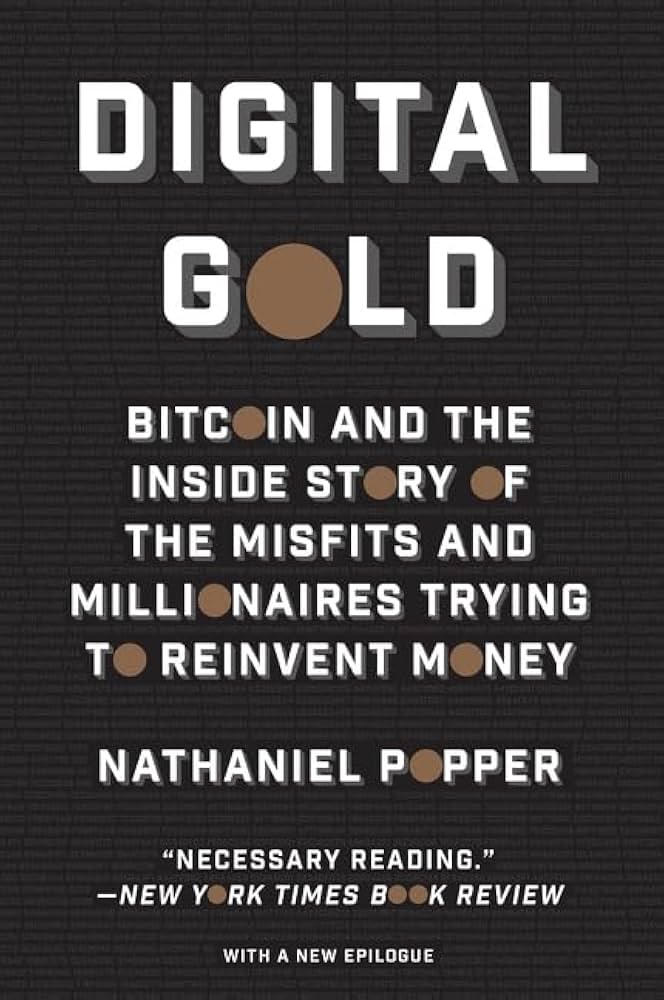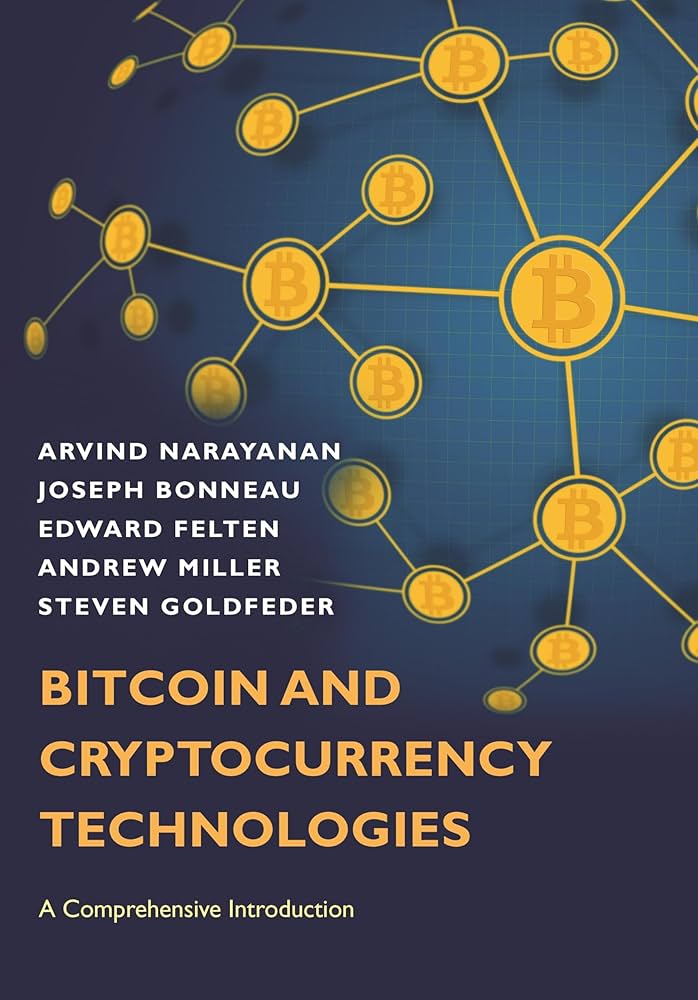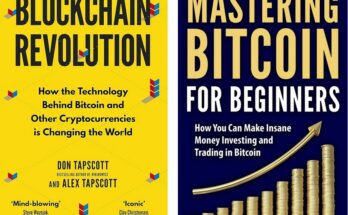

Digital Gold by Nathaniel Popper vs Bitcoin and Cryptocurrency Technologies by Arvind Narayanan, Joseph Bonneau, Edward
Brief Description
Digital Gold by Nathaniel Popper
“Digital Gold” is a narrative-driven book that chronicles the history of Bitcoin, focusing on the personalities and stories behind its creation and rise to prominence. Popper, a New York Times journalist, provides a detailed account of Bitcoin’s early adopters, developers, and investors, weaving their stories into a compelling tale. The book emphasizes the cultural and social impact of Bitcoin, making it accessible to readers with varying levels of technical knowledge.
Bitcoin and Cryptocurrency Technologies by Arvind Narayanan, Joseph Bonneau, Edward Felten, Andrew Miller, and Steven Goldfeder
“Bitcoin and Cryptocurrency Technologies” is a comprehensive textbook that provides a deep dive into the technical aspects of Bitcoin and other cryptocurrencies. Written by leading researchers and academics in the field, this book covers the underlying principles of blockchain technology, cryptographic protocols, and the economics of cryptocurrencies. It is designed for readers who want a rigorous, academic understanding of the technology and its applications.
Comparison Table
| Feature/Aspect | Digital Gold by Nathaniel Popper | Bitcoin and Cryptocurrency Technologies by Arvind Narayanan et al. |
|---|---|---|
| Author(s) | Nathaniel Popper | Arvind Narayanan, Joseph Bonneau, Edward Felten, Andrew Miller, Steven Goldfeder |
| Purpose | Narrative history and cultural impact | Technical and academic analysis |
| Target Audience | General readers, Bitcoin enthusiasts | Students, researchers, technical professionals |
| Content Focus | Stories of key figures and historical events | Technical principles, cryptographic protocols, blockchain technology |
| Writing Style | Narrative, engaging, journalistic | Academic, detailed, rigorous |
| Technical Depth | Moderate | High |
| Practical Applications | Provides context and background | Offers deep understanding of technical mechanisms |
| Accessibility | Accessible to non-technical readers | Requires some technical background |
| Publication Year | 2015 | 2016 |
| Format | Narrative non-fiction | Textbook |
Thoughts and Learning
Digital Gold:
- Strengths: Engaging storytelling, provides a human element to the rise of Bitcoin, accessible to a wide audience.
- Learning: Readers gain insights into the motivations and challenges faced by Bitcoin’s early adopters and the broader cultural implications of the cryptocurrency movement.
Bitcoin and Cryptocurrency Technologies:
- Strengths: In-depth technical coverage, authored by experts, suitable for academic study.
- Learning: Readers develop a comprehensive understanding of the technical underpinnings of cryptocurrencies, including blockchain mechanics, cryptographic techniques, and economic considerations.
Historical Context
- Bitcoin’s Origins: Understanding the inception of Bitcoin, its creator Satoshi Nakamoto, and the early motivations behind the technology.
- Key Figures: Insights into the lives and contributions of Bitcoin’s early adopters and developers, including figures like Roger Ver, the Winklevoss twins, and Hal Finney.
Cultural and Social Impact
- Revolutionary Potential: How Bitcoin challenged traditional financial systems and proposed new ways of thinking about money and value.
- Community and Culture: The role of Bitcoin in creating a new digital subculture and its impact on financial libertarianism and decentralization.
Economic and Financial Implications
- Market Evolution: The rise of Bitcoin as an investment asset and its influence on the broader cryptocurrency market.
- Regulatory Challenges: The initial reactions of regulators and financial institutions to Bitcoin’s emergence.
Conclusion
- Narrative: “Digital Gold” provides a compelling historical account of Bitcoin, focusing on personal stories and societal impacts rather than technical details.
- Cultural Significance: The book emphasizes Bitcoin’s role in shaping new economic ideas and movements, making it relevant to those interested in the broader implications of digital currencies.
- Accessibility: Suitable for general readers and those new to Bitcoin, offering a broad overview of the technology’s evolution and its impact on society.
Learning and Conclusion from “Bitcoin and Cryptocurrency Technologies” by Arvind Narayanan et al.
Learning
Technical Foundations
- Blockchain Technology: Detailed explanation of how blockchain technology underpins Bitcoin and other cryptocurrencies.
- Cryptographic Principles: Insights into the cryptographic techniques used to secure transactions and maintain network integrity.
Economic Models
- Incentives and Security: Understanding the incentive structures that drive mining and transaction verification within the Bitcoin network.
- Economic Implications: Analysis of how cryptocurrencies impact financial systems and economic theory.
Practical Applications
- Smart Contracts: Introduction to smart contracts and their use cases beyond Bitcoin, such as in Ethereum.
- Security Concerns: Examination of potential vulnerabilities and security issues related to cryptocurrencies.
Conclusion
- Technical Insight: “Bitcoin and Cryptocurrency Technologies” offers a thorough and technical analysis of the mechanisms behind cryptocurrencies, making it ideal for readers with a strong interest or background in technology.
- Educational Value: The book serves as a foundational resource for understanding the complex technical aspects of digital currencies, suitable for academic study and professional application.
- Complexity: The content is dense and technical, requiring a higher level of background knowledge compared to more narrative-driven works like “Digital Gold.”
Comparison Summary
- “Digital Gold” provides a historical and cultural narrative, focusing on the stories of Bitcoin’s pioneers and its societal impact, making it accessible to a broad audience.
- “Bitcoin and Cryptocurrency Technologies” offers a technical and detailed analysis of Bitcoin and blockchain technology, aimed at readers seeking an in-depth understanding of the underlying mechanisms and applications.



